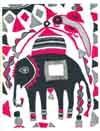


| Kathak Classical Indian Dance | ||
| Kathak is the most prominent style of North Indian classical dance. Its
name derives from the sanskrit words for "story" and for "making", thus
referring to one main feature of this style, the telling of stories by
the means of dance. The dancer represents all the characters of the story
with the help of a repertoire of gestures, facial expressions and graceful
movements of the limbs.
Kathak performances consist of two parts, Nritta and Nritya. The former, the so-called technical part, is a abstract dance with a tremendous sense of rhythm and joy of movement. The beauty of this part of Kathak lies in the exact rendering of the rhythmic patterns, given by the instruments, through graceful body movements and mastery of the artist's footwork. The second part of a Kathak performance is called Nritya, that means abhinaya, which is the explanation of a story or a song through facial expressions, gestures of the hands and symbolic postures of the body. The Kathak style is not totally rigid, however; it allows the artist to use a variety of free movements, thus leaving the interpretation of a story to the dancer's power of imagination and creativity. The stories performed in Kathak come from different strata of Indian literature. The oldest are from the Ramayana and the Mahabharata. Many stories and songs of medieval origin are in praise of Lord Krishna. There are three gharanas of Kathak, the Jaipur, Lucknow and Banaras schools. The gharana of Jaipur stresses technical items like toda and tukda, and ancient story telling. The Lucknow style is famous for graceful expression of romantic feelings. It was to a great extent influenced by the Moghul rulers, who also favoured thumris and ghazals. |
||


| Material © copyright Joy Foxley | Email Joy Foxley |


